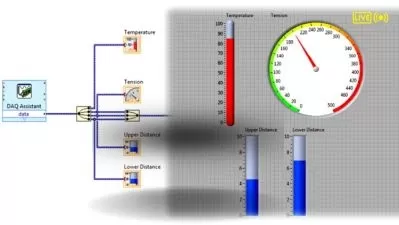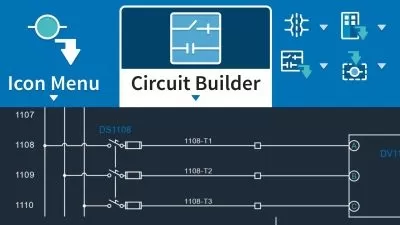Professional Circuit Design: Statistical Analysis
Andreas Ernst
2:20:38
Description
Statistical Method for Professional Circuit Development based on Typical Examples from Industry
What You'll Learn?
- In this course you will learn a statistical method for developing a robust circuit design using examples from electronics development
- You will gain a better understanding of electronic circuit developments in the field of statistical analysis
- You will learn step by step using examples from industry such as temperature sensors with external NTC, voltage monitoring, etc.
- The "Automotive Standard Tool" Mathcad Prime 7 is used for the calculations
Who is this for?
What You Need to Know?
More details
DescriptionIn this course you will learn a well-founded methodology for calculating the statistical tolerance of different electrical circuits. After this course you will be able to calculate different circuits and analyze them down to the smallest detail. You will learn this methodology using typical examples from industry.
The PTC Mathcad Prime tool is used for the calculations and derivations. Other tools can also be used, here the focus is on the calculation method and not the tool itself.
The following course content is explained in detail:
Introduction to Statistical Analysis
Mathcad Prime Basic Functions
Statistic Basics
Voltage Divider Circuit
Introduction
Goal of the Calculation
Circuit Diagram
Parameter Definitions
Gaussian Propagation of Uncertainty
Partial Derivations
Results
Summary
Temperature Measurment Sensor Circuit
Introduction
Goal of the Calculation
Requirements
Circuit Diagram
Parameter Definitions
Gaussian Propagation of Uncertainty
Standard Deviation
Partial Derivation
Temperature Coefficient
Results
Summary
My goal is that after completing this course you will be able to analyze different circuits and calculate them in a professional way. This knowledge offers you the best prerequisites for professionally developing and analyzing circuits. As a student As a graduate, you can use this knowledge to gain an advantage over other applicants. This will prepare you ideally for future jobs and projects.
Who this course is for:
- To engineers, students, technicians, physicists and people who want to continue their education
In this course you will learn a well-founded methodology for calculating the statistical tolerance of different electrical circuits. After this course you will be able to calculate different circuits and analyze them down to the smallest detail. You will learn this methodology using typical examples from industry.
The PTC Mathcad Prime tool is used for the calculations and derivations. Other tools can also be used, here the focus is on the calculation method and not the tool itself.
The following course content is explained in detail:
Introduction to Statistical Analysis
Mathcad Prime Basic Functions
Statistic Basics
Voltage Divider Circuit
Introduction
Goal of the Calculation
Circuit Diagram
Parameter Definitions
Gaussian Propagation of Uncertainty
Partial Derivations
Results
Summary
Temperature Measurment Sensor Circuit
Introduction
Goal of the Calculation
Requirements
Circuit Diagram
Parameter Definitions
Gaussian Propagation of Uncertainty
Standard Deviation
Partial Derivation
Temperature Coefficient
Results
Summary
My goal is that after completing this course you will be able to analyze different circuits and calculate them in a professional way. This knowledge offers you the best prerequisites for professionally developing and analyzing circuits. As a student As a graduate, you can use this knowledge to gain an advantage over other applicants. This will prepare you ideally for future jobs and projects.
Who this course is for:
- To engineers, students, technicians, physicists and people who want to continue their education
User Reviews
Rating
Andreas Ernst
Instructor's Courses
Udemy
View courses Udemy- language english
- Training sessions 29
- duration 2:20:38
- Release Date 2023/06/22
















